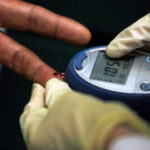The majority of incidents took place on social networks but there were also a high number of cases that involved text messages.
Cyber bullying has tripled in two years in Gauteng province’s high schools in South Africa, according to a study released this month by the Youth
Research Unit at the University of South Africa.
“Worryingly, we found that the prevalence rate increased from 16.9% in 2012 to 46.1% in 2014 and is catching up with traditional [physical and emotional] forms of bullying,” says Goodness Zulu, one of the study’s authors.
Conducted in 2014 among more than 1 500 children in private and government high schools in the province, the study found that girls (52.9%) were more likely to experience cyberbullying than boys (40.4%).
More than half of cyberbullying took place on social networks and a third were in text messages. Those who experienced cyberbullying reportedly received threatening messages, had rumours spread about them and suggestive photographs or videos of them were distributed online.
Boys arrested for sharing a video
One example is the case of a Pretoria teenage girl who had sent nude photographs of herself to a boy in her class. He then threatened to share the images on a social network if she did not pay him.
In February, 15 boys from a Durban high school were reportedly arrested after sharing a video of a teenage girl having sex with four boys in a classroom. The girl has since changed schools.
According to the study: “Almost 10% of learners used the reporting tools made available by social networking sites to report cyberbullying and this strategy resulted in the bully’s account being closed.”
The secretary general of the South African Principals’ Association, Daya Chetty, has introduced a cellphone policy to prevent cyberbullying at Laudium secondary school in Pretoria where he is the principal. It bans pupils from bringing their cell phones to school.
“With the increased use of technology in our classrooms, learners have access to so much more information and resources, which sometimes get used to bully their peers and their teachers. But there are many schools that don’t have proper policies in place to deal with this,” he says.
Extreme cases have led to suicide
The school’s governing body has employed a full-time counsellor and a social worker to address the results and causes of bullying. “We have recently employed a full-time coach to get the children away from the technology and get them to play sports,” says Chetty.
Zulu says: “Learners who were bullied reported feelings of anger, sadness, frustration, helplessness, depression and thoughts of suicide.”
There have been reports of cases in which victims of bullying had committed suicide or killed the bully.
But only 27% of children who were bullied reported it.
“Learners who reported to have been perpetrators of bullying claimed to have been in trouble as a result of their bullying behaviour. These consequences include being sent to the principals’ office (46.5%), disciplined by the teacher (35%), and disciplined by the parent (33.5%),” according to the study.
Ina Skosana was a health reporter at Bhekisisa.





